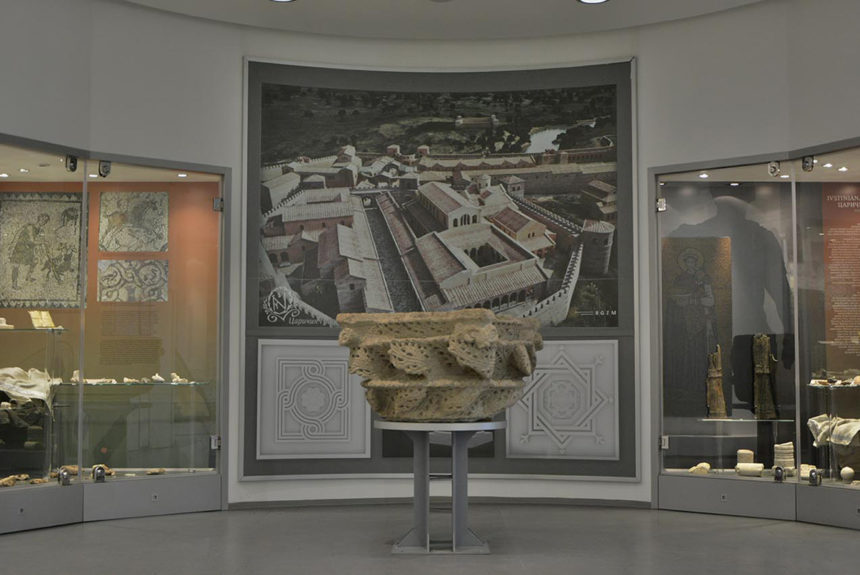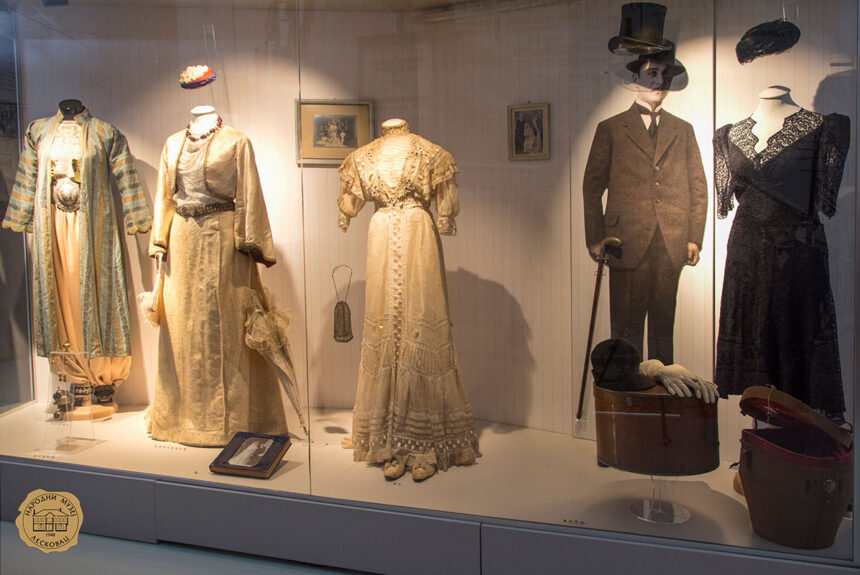Permanent Exhibition
Permanent Exhibition, “Timeline of Leskovac Area”, displays the life of the inhabitants of the Leskovac area from the Neolithic to the late Turkish times. In two architectural pieces, 8,000 years of history are presented.
The first part, in a pyramid-shaped showcase, symbolically shows the archeological treasure of Hisar, a hill above Leskovac, which represents the richest site of the Brnjica cultural group, dated from the 14th century BC.
Gold jewelry from the Mala Kopašnica site present the period of Roman domination. Medieval history depicts Dubočica and the time of Nemanjić, the time of Despotate and the development of the town during the time of the Turks. The space that testifies to the Middle Ages is dominated by the figure of the Serbian knight Nikola Skobaljić – in natural size and with full warrior equipment. A special place was given to the “panađur” of Leskovac, the largest and most famous fair in the Balkans, attended by Dubrovnik merchants and traders from all over the region. The second architectural part of the exhibition presents the archeological site of the Justiniana Prima – the birthplace of Emperor Justinian the First. A part of the exhibition concerning the Justiniana Prima, which is on UNESCO’s preliminary list of World Heritage Sites, makes material collected through hundreds of years of research.
A part of the permanent exhibition is located in the upstairs galleries and display the period from liberation from the Turks, at the end of 1877, to the beginning of the Second World War, when Leskovac underwent a dynamic and rapid transformation – the transformation from a slightly larger oriental-looking town in the middle of the 19th century to the most important Serbian industrial center after Belgrade. Through the exhibited artifacts, the exhibition ” Timeline of Leskovac Area – Leskovac- Serbian Manchester 1878-1941″ shows the dual character of the city: national costumes on the one hand, and tailcoats made of English cloth, on the other; in one place the tenacious survival of archaic crafts, and the dealership of “Standard Oil” at another, inconspicuous and dilapidated cafes on the periphery with barns in the yard, and in the center the competition of hotels “Kostić” and “Paris” with dances, jazz concerts and screenings of sound films.
The period between the two world wars is also a time of intensive development of Leskovac. Its urban character is changing, the Turkish cobblestones are being replaced by cubes and asphalt. The Leskovac Bazaar was the center of all important events and the best indicator of economic and social development. In that period, Leskovac became the center of the textile, but also the chemical, metal, and food industries, the center of crafts and trade.

















